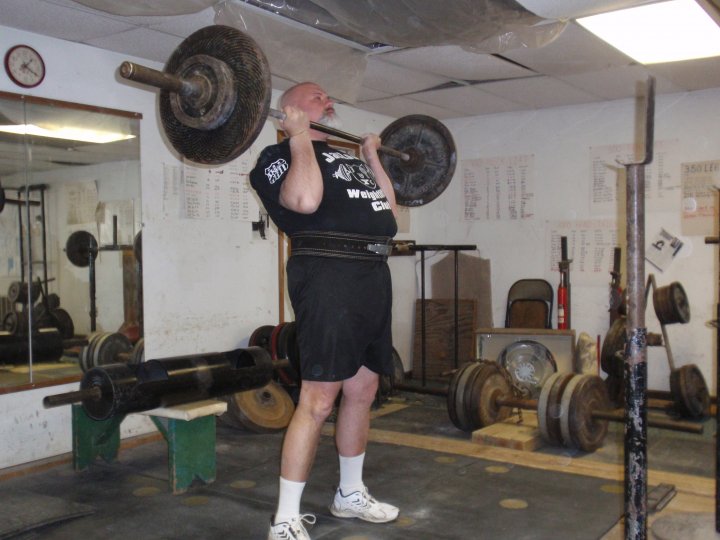Can you Cheat on the Cheat Curl?
by Thom Van Vleck

I love me some Cheat Curl! There may be some rule changes that bring the USAWA in line with IAWA rules that will open this up for lots of new records!
The Cheat Curl will be contested at the 2011 USAWA Nationals held June 25 and hosted by the Jackson Weightlifting Club in Kirksville, Missouri. An interesting paradox will take place with this lift. As always, the USAWA annual meeting will take place. This is the one time when rule changes can be discussed, voted on, and passed. Interestingly enough, one of the lifts being contested is the Cheat Curl. The USAWA rules currently are different from the IAWA rules and there is a proposal to change the USAWA rules to bring them in line with the IAWA rules. One of the major differences is the USAWA requires the feet to stay flat on the floor while the IAWA rules allow for the heels to raise. So, according to the USAWA rules if you did a Cheat Curl following the IAWA rules…you’d be CHEATING? So I guess it is possible to cheat on the Cheat Curl! Now, here’s where the paradox comes in.
Traditionally, the rules meeting has taken place after the meet. Since the meeting can be lengthy and since there’s usually a banquet of some sorts afterwards Al Myers and myself decided to have the meeting the night before the meet. That way, we get the “business” out of the way and the day of the meet only focuses on the lifting and the fun afterwards! This has created an interesting situation. One of the lifts being contested on Saturday may have the rules changed on Friday! If so, then which rules apply!
Currently, the USAWA rules state:
So, be ready for both sets of rules and we will see how this plays out!